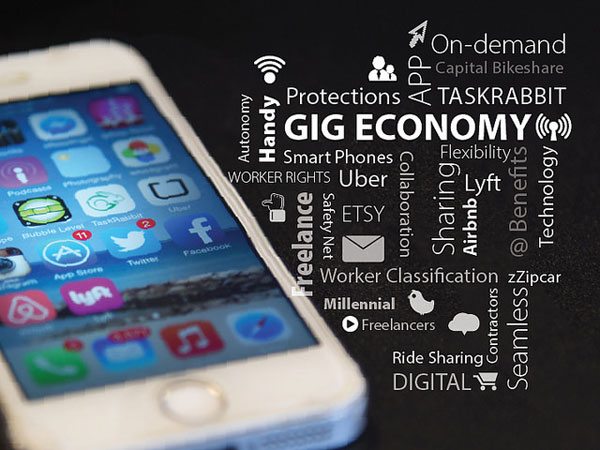
April 30, 2018; Los Angeles Times and Lexology
Pro-labor Court rulings are rare these days, but a critical one took place last week. In a decision that has been called a contractor apocalypse, an earthquake, and a seismic shift, the California Supreme Court significantly tightened independent contractor rules. In a 7–0 ruling, the California Supreme Court ruled, in essence, that if it looks like an employment relationship, it is.
The case, Dynamex Operations West v. Superior Court, touches on core issues affecting the US workforce. According to Lawrence Katz of Harvard and Alan Krueger of Princeton, as of 2015, 8.4 percent of Americans—or roughly 12.5 million people—work as independent contractors, up from 10.3 million in 2005.
The impact of independent contracting on public finance and the nonprofit sector is substantial. The California Department of Industrial Relations writes that, “The misclassification of workers results in a loss of payroll tax revenue to the State, estimated at $7 billion per year, and increased reliance on the public safety net by workers who are denied access to work-based protections.”
As Fisher Phillips notes in Lexology, the Dynamex case has been in the courts for more than a decade. Phillips explains:
Charles Lee and Pedro Chevez were hired by Dynamex as delivery drivers to transport packages, letters and parcels to Dynamex customers. Prior to 2004, Dynamex classified its California drivers as employees, but in 2004, the company converted all drivers from employees to independent contractors. In 2005, several drivers filed suit alleging they performed the same tasks as contractors as they performed when they were classified as employees; as a consequence, they said, the reclassification violated California law. The plaintiffs sought to represent approximately 1,800 drivers engaged as independent contractors.
Technically, the Court did not rule in favor of the drivers. What it did, however, was more far-reaching: it remanded the case and ordered lower courts to apply an “ABC” test, under which it is hard to imagine the drivers losing. Specifically, as Phillips outlines, the three prongs are:
A) the worker is free from the control and direction of the hirer in connection with the performance of the work, both under the contract for the performance of such work and in fact
Sign up for our free newsletters
Subscribe to NPQ's newsletters to have our top stories delivered directly to your inbox.
By signing up, you agree to our privacy policy and terms of use, and to receive messages from NPQ and our partners.
B) the worker performs work that is outside the usual course of the hiring entity’s business
C) the worker is customarily engaged in an independently established trade, occupation, or business of the same nature as the work performed for the hiring entity
Phillips adds that the “decision not only expands the definition of ‘employee’ under the California Wage Orders, it also imposes an affirmative burden on companies to prove that independent contractors are being properly classified.”
The “B” part of the test seems particularly hard to evade: how can Dynamex, a transportation services company, successfully argue that its package deliverers are performing a task that is outside the usual course of its business? Likewise, Uber and Lyft, two companies whose usual course of business involves providing rides to passengers, would seem hard pressed to avoid reclassifying their drivers as employees.
Maura Dolan and Andrew Khouri writing in the Los Angeles Times, note that, “The unanimous decision has implications for the growing gig economy, such as Uber, Lyft and other app-driven services—but it could extend to nearly every employment sector.”
In the Court’s decision, Chief Justice Tani Cantil-Sakauye writes that a person can only be denied employee status “if the worker is the type of traditional independent contractor—such as an independent plumber or electrician—who would not reasonably have been viewed as working in the hiring business.”
Michael Rubin, an attorney who represented labor and civil rights groups in the case, says he believes the decision will “accelerate the trend by states toward expanding worker protections, in part as a counterweight to the restrictions on worker rights under federal law.” The California decision, Rubin notes, follows similar rulings in Massachusetts and New Jersey.
Under the new standard, says Michael Chasalow, a University of Southern California law professor, drivers for Uber and Lyft should be classified as employees because those companies’ usual course of business is providing rides. But Chasalow cautions that while the ruling governs “wage orders” (which cover minimum wages and basic working conditions like hours and break times), it doesn’t cover other important matters like workers’ compensation. In short, companies might seek to classify the same workers as employees for some purposes and as contractors for others. Dolan and Khouri add that the decision also doesn’t touch on a key question in current federal Uber and Lyft cases of whether drivers should be reimbursed for gas, car repairs, and insurance.—Steve Dubb











